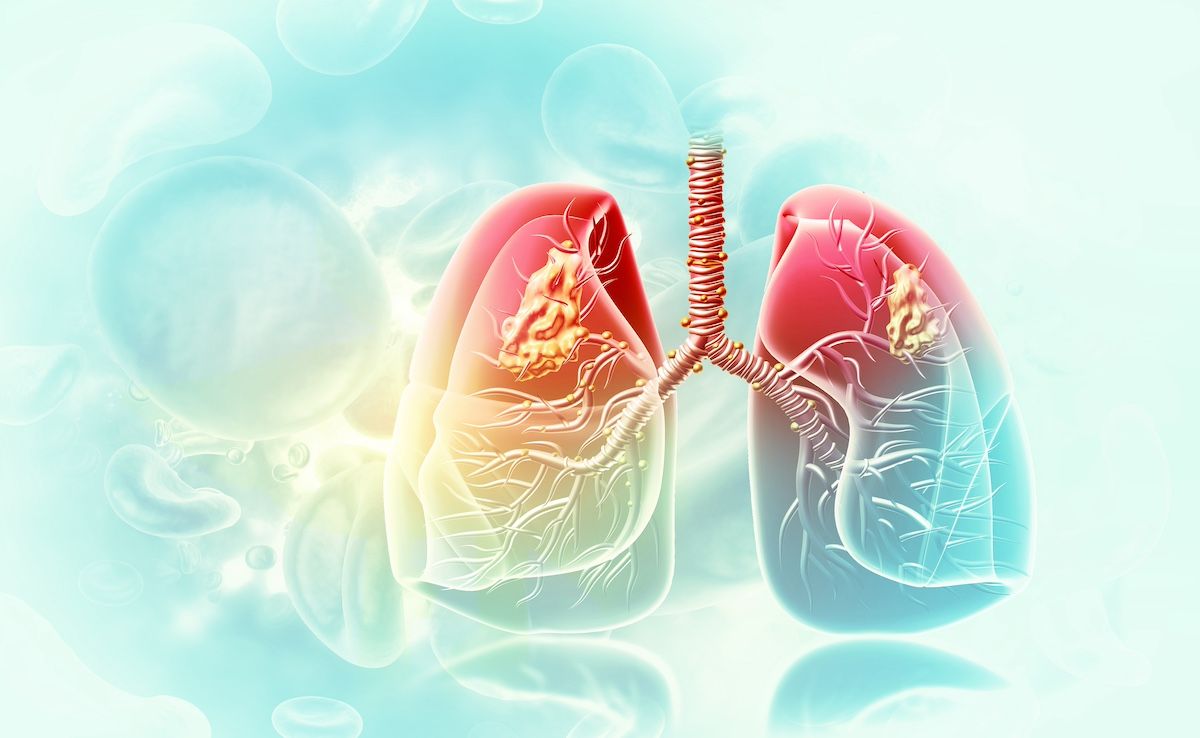Publication
Article
Evidence-Based Oncology
So Many Metrics, Yet So Little Known About Quality and Value in Cancer Care
Author(s):
As cancer care stakeholders move through processes of creating, deploying, and reporting quality metrics, it is important to remember that these measures alone are not sufficient to bring better care to patients.

We are in the midst of a volatile period of time in which healthcare processes, patterns of utilization, cost, care delivery, and outcomes are increasingly metricized. This headlong rush toward greater metrification of care delivery, including cancer care, accelerated following passage of the Affordable Care Act (ACA) in 2010. An important strategic goal of the ACA was that of linking payment to measures of performance and effectiveness, rather than making payments based simply upon volume.1
In 2015, HHS Secretary Sylvia Burwell wrote in the New England Journal of Medicine that an important goal of CMS was that, “85% of Medicare fee-for-service payments should be tied to quality or value by 2016.”2 Beyond CMS, many cancer care stakeholders are heavily invested in the goal of more effectively aligning payment with care quality and value delivery. While quality metrics are viewed as important tools for ensuring greater care efficiency and improving the financial sustainability of our care systems, they are also seen as an objective and transparent means for ensuring that patients receive better, more effective, and more patient-centered care.3 Toward this end, numerous organizations have proposed, endorsed, and reported performance based upon defined quality measures. These metrics stewards include the National Quality Forum (NQF),4 the Commission on Cancer (CoC),5 the American Society of Clinical Oncology (ASCO) through its Quality Oncology Practice Initiative or QOPI,6 and others whose unique expertise and ability to evaluate and endorse rigorous quality measures make them important contributors to this process.
Despite a wealth of cancer quality measures, a number of lingering questions persist:
- Do these measures actually work to improve care?
- Do they measure what matters most to patients and their families?
- Are they robust enough to discern which hospitals and physicians provide excellent care from those who do not?
- Do they constitute the most important or relevant measures in an era in which we are asked to deliver personalized medicine and precision cancer care solutions?
From this perspective, the effectiveness and utility of many of the endorsed cancer care measures appear to be questionable. Their central role in determining payment, patient referral patterns, and crafting a national health care strategy needs to be viewed with greater skepticism. This is not to cast doubt upon the value of quality measures; rather, this skepticism is based on inadequacies of the current measure sets when viewed from the prism of the extraordinary diversity of cancer patients, the importance of molecular biology in care decisions, the centrality of patient risk-assessment in care decision making, and our highly imperfect methods for collecting and analyzing data. Even those who view cancer care metrics as an important set of tools for improving care processes and outcomes, the complexity of this task is clear. Spinks et al note that, “Cancer represents a set of diseases with some common traits but tremendous variability, unlike more homogeneous conditions such as diabetes. Cancers vary greatly depending on location, type, stage, and molecular and genetic characteristics. Treatment may involve medical, surgical, and radiation oncologists, which presents a unique challenge for attributing patient outcomes to a particular provider. . .These factors underlie the formidable challenge of representing a disparate set of diseases with a uniform set of quality measures.”3
As cancer care stakeholders move through processes of creating, deploying, and reporting quality metrics, it is important to remember that these measures alone are not sufficient to bring better care to patients. Cancer care quality measures are not the equivalent of baseball sabermetrics;7 there is no easy, metric-based fast-track toward creating a less costly, more effective cancer care delivery system. Our national enthusiasm for metrics often blinds us to broader complexities of delivering excellent care, and our need to meet the distinct (and sometimes non-overlapping) needs of many cancer care stakeholders in the process.
Characterizing Value in Healthcare
In his New England Journal of Medicine paper on value in health care, Michael Porter notes that, “Value—neither an abstract ideal nor a code word for cost reduction—should define the framework for performance improvement in healthcare. Rigorous, disciplined measurement and improvement of value is the best way to drive system progress.” Yet, value in healthcare remains largely unmeasured and misunderstood.
Value should always be defined around the customer, and in a well-functioning healthcare system, the creation of value for patients should determine the rewards for all other actors in the system.8 If we are ever to bring a system of cancer care that fully ensures safe, effective, patient-centered, timely, efficient, and equitable care to fruition,9 then we need to better understand the limitations of our current quality measures, so that future measures can more effectively center around patient and stakeholder needs, rather than simply assess what is most easily measurable.
In order to get to better quality metrics, we need to recognize the following concerns with our current set of measures:
- Quality and value are multidimensional, but the narrow focus of many quality measures undermines their effectiveness and meaningfulness.8
- Quality and value measures are all too often based upon isolated care transactions, rather than based upon the continuum-of-care model that is an essential part of effective cancer care.8
- Few quality/cost/value measures include risk as part of their formulation or expression.3,4,10
- Electronic Health Records do not facilitate capture or assessment of key outcomes data.11
- Few quality measures are linked to care strategy, healthcare facility/provider strategic planning, or the development of more effective care systems.12
- Our measures for assessing patient-reported outcomes are weak, and rarely measure those things which matter most to patients.13,14
A number of cancer care stakeholders are in the process of creating value models from which more meaningful patient and care delivery metrics can be derived. Important leaders, in this domain, include ASCO15 and the National Comprehensive Cancer Network.16
EBO
In their Harvard Business Review article, entitled, “The Strategy that Will Fix Health Care,” Porter and Lee recommend that in care planning and effectiveness assessment, the focus should be placed upon the patient and the effectiveness, efficiency, and patient-centeredness of longitudinal care delivery.17 A model like this is more likely to empower metrics that measure what matters most to patients, their families, and other key healthcare stakeholders. This shift from a short-term to a long-term mindset over cancer metrics will be important to ensure that our metrics help drive meaningful change in our cancer care system. The importance of carefully defining value in a multidimensional, patient-centered manner is essential to achieving meaningful improvements in care delivery. As Porter notes in his New England Journal of Medicine article on value, “The failure to prioritize value improvement in health care delivery and to measure value has slowed innovation, led to ill-advised cost containment, and encouraged micromanagement of physicians’ practices, which imposes substantial costs of its own. Aligning reimbursement with value in this way rewards providers for efficiency in achieving good outcomes while creating accountability for substandard care.”8
Joseph Alvarnas, MD, is associate clinical professor and director of medical quality, risk, and regulatory management, City of Hope, Duarte, CA. He is also the editor in chief of Evidence-Based Oncology.References
- Linking quality to payment. Medicare.gov website. https://www.medicare.gov/hospitalcompare/linking-quality-to-payment.html. Accessed May 31, 2016.
- Burwell SM. Setting value-based payment goals—HHS efforts to improve U.S. health care. N Engl J Med. 2015;372(10):897-899. doi:10.1056/NEJMp1500445.
- Spinks TE, Walters R, Feeley TW, et al. Improving cancer care through public reporting of meaningful quality measures. Health Aff (Millwood). 2011;30(4):664-672. doi:10.1377/hlthaff.2011.0089.
- National Quality Forum website. http://www.qualityforum.org/Home.aspx. Accessed May 31, 2016.
- Commission on Cancer website. https://www.facs.org/quality-programs/cancer/coc. Accessed May 31, 2016.
- Measures overview. ASCO Institute for Quality website. http://www.instituteforquality.org/qopi/measures. Accessed May 31, 2016.
- Albert J. An introduction to Sabermetrics. Bowling Green State University website. http://www-math.bgsu.edu/~albert/papers/saber.html. Accessed May 31, 2016.
- Porter ME. What is value in health care? N Engl J Med. 2010;363(26):2477-2481. doi:10.1056/NEJMp1011024.
- The six domains of healthcare quality. Agency for Healthcare Research and Quality website. http://www.ahrq.gov/professionals/quality-patient-safety/talkingquality/create/sixdomains.html. Reviewed March 2016. Accessed May 31, 2016.
- Methodology employed for annual report on hematopoietic cell transplant center-specific survival rates. Center for International Bone Marrow Transplant Research website. https://www.cibmtr.org/ReferenceCenter/SlidesReports/USStats/Documents/CIBMTR_HCT_Center_Survival_Report_Methodology.pdf. Updated February 5, 2016. Accessed May 31, 2016.
- Klumpp TR. Electronic medical records and quality of cancer care. Curr Oncol Rep. 2013;15(6):588-594. doi:10.1007/s11912-013-0347-z.
- Porter ME, Lee TH. Why strategy matters now. N Engl J Med. 2015;372(18)1681-1684. doi:10.1056/NEJMp1502419.
- Johnson CY. The burden of cancer isn’t just cancer. The Washington Post website. https://www.washingtonpost.com/news/wonk/wp/2016/04/08/cancers-sinister-side-effect-financial-toxicity/?tid=a_inl. Published April 8, 2016. Accessed May 31, 2016.
- de Boer AGEM, Verbeek JHAM, Spelten ER, et al. Work ability and return-to-work in cancer patients. Br J Cancer. 2008;98(8):1342-1347. doi:10.1038/sj.bjc.6604302.
- Cavallo J. ASCO develops new strategy to increase value in cancer care. The ASCO Post website. http://www.ascopost.com/issues/may-15-2014/asco-develops-new-strategy-to-increase-value-in-cancer-care/. Published May 15, 2014. Accessed May 31, 2016.
- NCCN unveils evidence blocks for CML and multiple myeloma. National Comprehensive Cancer Network website. https://www.nccn.org/about/news/newsinfo.aspx?NewsID=546. Accessed May 31, 2016.
- Porter ME, Lee TH. The strategy that will fix health care. Harvard Business Review website. https://hbr.org/2013/10/the-strategy-that-will-fix-health-care. Published October 2013. Accessed May 31, 2016.

Newsletter
Stay ahead of policy, cost, and value—subscribe to AJMC for expert insights at the intersection of clinical care and health economics.






